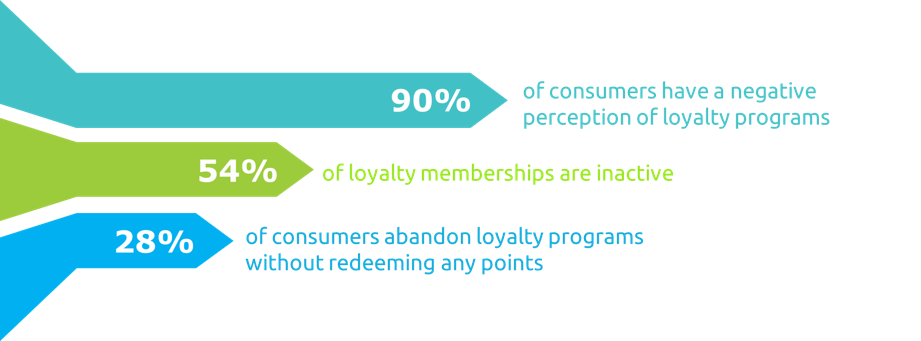The new era of loyalty: why brands should embrace loyalty schemes
The concept of customer loyalty isn’t new. In fact, it’s well over 200 years old, starting out as coupons or tokens collected and exchanged for goods. While loyalty programs of today have come a long way, the basic premise of transactionally-driven benefits and rewards still remains: buy X, get Y points, resulting in Z reward.

Capgemini Invent on the lucrative value of loyalty schemes and how brands can do more
However, a shortcoming of this successful approach is the oversaturation of ‘me-too’ programs giving limited differentiation in rewards for customers. Research by Capgemini states 90% of customers have a negative perception of loyalty programs on offer today.

In addition, another study found that customers with high emotional engagement spend two times more on brands they are loyal to than those without an emotional connection. This isn’t to say people have stopped seeking rational rewards such as points or discounts, but it seems that a new era of ‘human’ loyalty is upon us.
Exploring emotional connections through loyalty
Customers will always have a level of expectation to be rewarded for being loyal. However, this doesn’t stop them signing up to loyalty programs from multiple retailers offering similar or the same products or services. In fact, on average a customer can be part of 14.8 loyalty programs, but may only be active in 6.7 of them.
Customers want more from their favorite programs than standard rewards, such as a voucher for £1 off on their next purchase. When it comes to investing in your customers’ emotional wants and needs, brands need to think bigger. Knowing customers on an emotional level isn’t just their names, emails and phone numbers, but their likes, values, aspirations and dreams – as well as appreciating that they could dramatically change in line with different social trends. Many loyalty offerings are static and predictable, which leads many customers to ’play the loyalty field’, shifting their loyalty and spending where the next best offer lies.
Establishing such connections requires new strategies, offers and innovations to be leveraged by businesses. Below are some examples of how brands have started rethinking the ‘why, what and how’ of loyalty.
1. Community and sustainability
An increase in support for communities and causes, as well as a widespread affinity to more sustainable consumption practices, are symptomatic of the recent Covid-19 pandemic. Customers became more aware of the footprint that their lifestyles have on the world through wastage and carbon emissions. Such exposure has made customers demand their favorite brands start supporting causes important to them.
A study by the Capgemini Research Institute has proven that such business goals are also commercially justified; 70% of emotionally-engaged customers say that certain brand values – such as being socially responsible or environmentally friendly – are important when deciding which brand to be loyal to and spend with.
Sephora is a brand riding the wave of human loyalty; while still offering the classic transactionally-led rewards, it bolsters these by offering members the option to spend their reward points on donations to charities such as National Black Justice and Project Glimmer.
Similarly, outdoor adventure retailer Patagonia showcases how infusing values important to its customers nurtures meaningful loyalty, embedding sustainability into its business model. Customers are reassured that it values waste reduction, is committed to a low carbon footprint, promotes recycling and reusing items, and gives back to the restoration of the environment. These are both great examples of bridging the gap between traditional reward schemes and ‘new-age’ emotive loyalty to help customers make a meaningful impact on their communities.
2. Paid loyalty
Paid loyalty has the potential to increase engagement and spending, as demonstrated by the success of Amazon Prime. Paid loyalty is the act of customers paying for the privilege and exclusivity of joining a brand’s loyalty program.
Brands such as Lululemon have capitalized on this through offering customers a membership at the cost of $128 annually in return for a free pair of leggings or shorts (which retail at $100+), plus priority delivery and access to excusive content and classes. This approach appeals to a customer’s emotional side through the exclusivity element by being part of a members-only ‘club’. Similarly, the subscription market (set to be worth £1bn by 2022) is becoming a popular approach, with fast-growing brands such as Huel and Hello Fresh deploying their own offers.
3. Non-fungible tokens (NFTs)
NFTs are digital assets that represent real-world objects, and have unique identifying codes encoded with the same underlying software as many cryptocurrencies. NFTs as a mechanism for loyalty can be leveraged to gamify, trade and auction items from a brand, providing customers with a unique item.
This could be done on a small scale, such as through collectibles when making purchases (such as Pokemon cards to trade), or on a bigger scale, such as Givenchy, who partnered with a London gallery owner to create digital artwork for auction. Asics also recently launched its Sunrise Red NFT collection, with the opportunity to own a one-of-a-kind pair, with all proceeds going to the Asics Digital Goods Artist-In-Residence program.
Initiatives such as these are bound to increase with new technologies from the likes of Loyyal, which provides the foundation many NFTs are built on, delivering blockchain-as-a-service (BaaS) to create, launch and track loyalty and benefits much more easily. The blockchain ledger technology allows seamless connections between multiple programs, capturing all earn-and-burn transactions and creating a common ‘reserve currency’ to be interchangeably used across programs.
4. Flexible points
While currency or points are probably the epitome of traditional/transactional loyalty, new technologies are enabling a more flexible use case that benefits customers who yearn for new types of rewards. A promising tech startup, Swapi, aims to tap into unspent points across loyalty schemes by allowing customers to swap them between multiple brands. Customers can also redeem the benefits and rewards most fitting to their current lifestyle projects and aspirations, all through a convenient mobile app. This prevents customers from switching between loyalty programs based on the best offer or changing needs, while also refreshing the traditional points systems in line with the new era of loyalty.
Delivering emotional gold in a new era of loyalty
Many brands are already taking a different approach to their loyalty offerings to create true ‘human’ loyalty. While we don’t envisage a world where traditional loyalty will die out, there are various mechanics, technologies and overall customer loyalty thinking that can be employed to adapt and evoke emotive loyalty as the new norm. It’s up to each business to define the approach that fits its brand objectives, values and customer profiles. What’s critical is that brands act to minimize the risk of falling behind in the quest to earn and preserve their most valuable customers in the new era of loyalty.
In this digital world, opportunities in Inventive Shopping will disrupt the shopping experience of today and become a powerful engine for growth. If you’re keen to learn more and understand what your brand can do in this new era of loyalty, please get in touch.



 Print the article
Print the article


